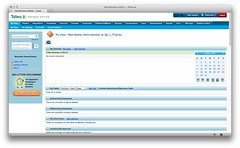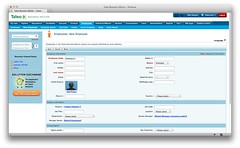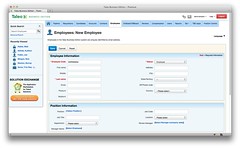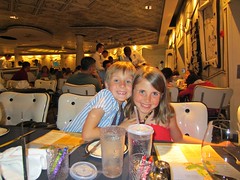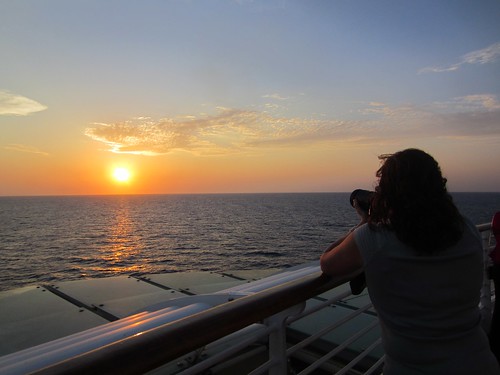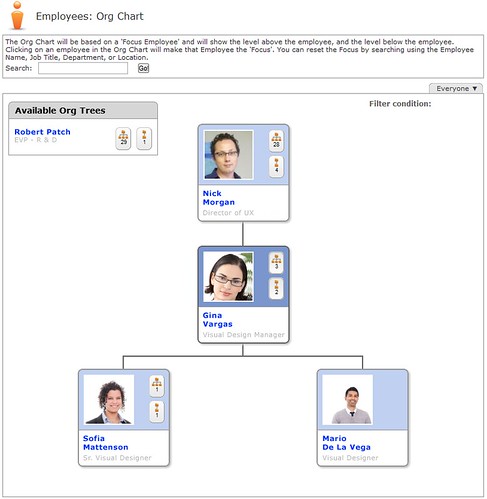Core HTML5 Canvas Book Review
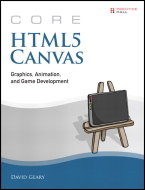 I've known David Geary for quite some time, from our original meeting in the blogosphere to speaking on the No Fluff Tour. At first, I had trouble respecting the guy because he was such a JSF Fanboy. However, over the years, he's switched to Ruby on Rails, GWT and now he's all about HTML5. Specifically, HTML5's <canvas> element. When David asked me if I'd like a copy of his lastest book, I jumped at the opportunity.
I've known David Geary for quite some time, from our original meeting in the blogosphere to speaking on the No Fluff Tour. At first, I had trouble respecting the guy because he was such a JSF Fanboy. However, over the years, he's switched to Ruby on Rails, GWT and now he's all about HTML5. Specifically, HTML5's <canvas> element. When David asked me if I'd like a copy of his lastest book, I jumped at the opportunity.
I received it in the mail shortly before heading to Hawaii this summer. I started reading it by the pool the next day.
I was immediately impressed that the book was printed in color. The first copy I ever saw of my Spring Primer was in color and it really popped. Geary's book does the same and I'm glad the publisher decided the extra cost of printing was worth it. In the preface (and in a recent blog post), David explains how he wrote the book code-first in the Zen tradition, so you can read it without reading. I saw him write somewhere that he spent 2 years, 60 hours per week writing it. It really shows - the sheer amount of code and knowledge in this book is amazing.
Looking back at the Table of Contents, I remember getting overwhelmed early on. Not overwhelmed in that I didn't understand how things were working, but more like "there's too much in here to try and remember it all". I haven't used algebra since high school, and right there on page 53 it says:
To do anything interesting with Canvas, you need a good basic understanding of basic mathematics, especially working with algebraic equations, trigonometry, and vectors.
Reading the book poolside wasn't a huge motivator to refresh my algebraic knowledge, but I did enjoy David's brief 10-page refresher. In Chapter 2 on Drawing, the book dives into the low-level API that canvas offers for drawing rectangles, circles and polygons. It also goes on to show you how to do gradients, patterns and shadows as well as all there is to know about paths, stroking and filling. This is when it hits you that <canvas> is more about JavaScript than HTML. In fact, it's usually only a couple lines of HTML and a whole lotta JavaScript.
In Chapter 3, you learn about text and how to work with fonts and paragraphs. David even spends 10 pages showing you how to implement a Paragraph, complete with positioning the cursor, adding new lines and working with backspace. It really makes you appreciate what HTML offers you with the good ol' <p> and <input type="text">.
Chapter 4 is where you learn about working with images and video, using offscreen canvases and working with a canvas within a canvas. I believe I was back in Colorado when I started reading this chapter. It's also where I succumbed to the fact that this was an excellent reference book and not something I was going to read, learn from and start using the next week. It feels like a book I'll refer back to many times when using <canvas> on a project. The amount of knowledge in the book seems akin to Rod Johnson's J2EE Development without EJB. I remember getting the general gist of Rod's ideas while reading the book, but not knowing how to put them into use. Then the Spring Framework was introduced and everything became clear. As I read Geary's book, I thought the same thing - someone really needs to develop a simpler API for Canvas.
As I read on, through chapters on Animations, Sprites, Physics, Collision Detection and Game Development, it hit me - maybe that's what David is doing!
Throughout the book, David builds a framework for working with Shapes, animating them and finally, for putting them to work in a gaming environment. The Ungame is nice in that it shows you how to use a game engine for building your own games. Then he goes on to show you a Pinball game that looks overly complex, but breaks it down into terms you can understand.
The last chapter is on Mobile development. It explains in detail about the viewport metatag, media queries for CSS and touch events. The section on iOS5 is good, but does make the book seem slightly outdated with iOS6 coming out next week. I'm sure all of the content is still relevant, but it almost seems like labeling it iOS5+ would've been better. In the final pages of the book, you learn how using a canvas that requires typing on a touch device might suck. David shows you how to implement a Virtual Keyboard to handle these situations, since the native keyboard won't pop up unless you're typing into HTML controls like <input> and <textarea>.
I read this book to learn more about Canvas and what it was capable of. I learned all it can do and much, much more. I learned how animations and timing can be different between browsers and how you might need to create a polyfill for requestAnimationFrame for it to work consistently.
More than anything, I recognized that this is one of the few technical books I've read in a long time that's become an instant valuable resource. With other books, the information is often available online. Not so with Geary's book. To me, it seems like the best resource available for learning and using HTML5 Canvas.
Well done, David, well done.


